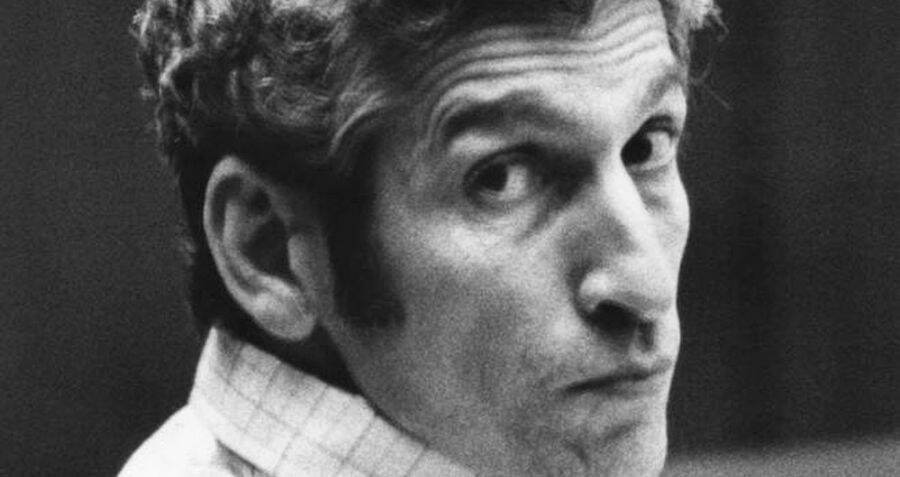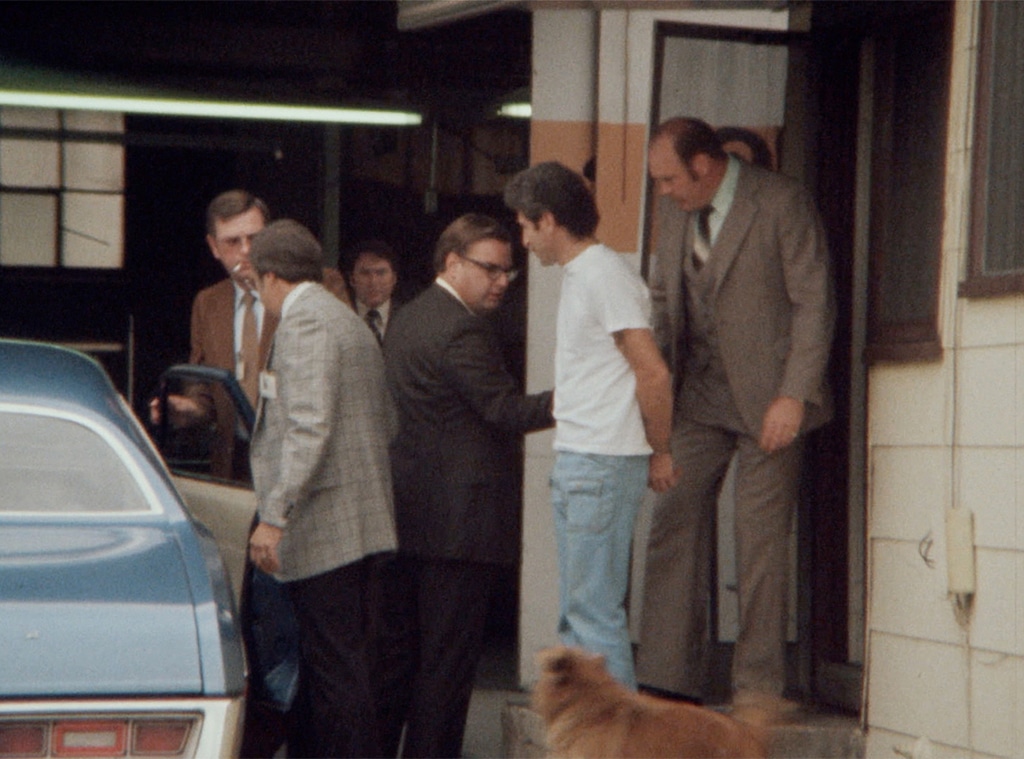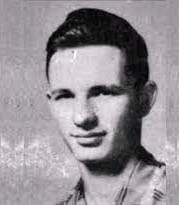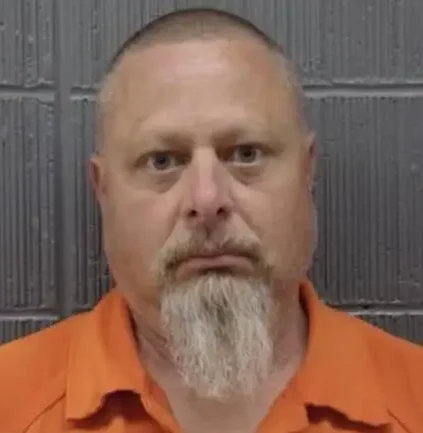
Kenneth Bianchi was born in 1951 in Rochester, New York. The child of a prostitute who didn’t want him and gave him to a neighbor to take care of for a day, who then gave him to another neighbor to take care of for a day, to another neighbor… Basically for 4 months there was no bonding. He was adopted by Frances and Nickolas Bianchi. Frances always wanted a child and she adored Kenneth. She was terrified something horrible would happen to him. He became almost a God to his mother. He was her life. She was terrified that he was going to get sick and die, so she was constantly having him checked. This overprotective parenting really had to affect his ability to feel that he was a strong and powerful person. She fixated on urinary tract infections. Some argue that that early genital stimulation whether it’s through sexual abuse, whether it’s through Medical Care will provide a background for later oversexualization of the child. All throughout his medical records there were comments about how his mother was a very troubled woman and needed help and so was the child. He always lied a lot. The research has shown that 97% of the population admit to lying on a daily basis and the researchers concluded that 3% were lying about their lying. The difference here is that Bianchi and other individuals are pathological liars. They’re not telling “white lies” to exaggerate their importance or to get out of wrongdoing. They’re lying when they don’t have to lie, because to them lying is a form of control and domination. Kenneth Bianchi was married.

Angelo Buono, 44, grew up without a father in the home, in an area in which there were Mexican gangs. He was Italian, but he hung out with the some of these Mexican gangs. He had juvenile arrests. He was vicious to women and that seemed to have stared at least in high school. He showed almost hatred of women. He loved inflicted pain. He was a sadist. His brutality towards his wife led to divorce. He had three more marriages that ended in divorce. He worked in car dealerships. He opened up the car shop in Glendale. He slept with many young girls, including his son’s girlfriends.
They were cousins.
In 1977 a series of murders left the women of Los Angeles afraid to walk the streets.
On October 17, 1977, Yolanda Washington, 19, was found dead. She was a prostitute who was supporting her baby boy. Her naked body was found on a hillside near the Ventura highway at 6510 Forest Lawn Drive in Los Angeles, positioned in a lewd manner. Her body had been cleaned before being dumped and faint rope marks were visible around her neck, wrists, and ankles. She had been beaten, raped and strangled to death and was the first confirmed mutual victim of Bianchi and Buono. The two men picked her up and killed her in their vehicle as they pretended to be police officers in civilian attire.
Judith Miller, 15, was found dead on October 31, 1977. She was a student at Hollywood High School who also worked as a prostitute. She was looking for clients when Bianchi and Buono approached her on October 31, 1977. She was murdered in Angelo’s upholstery shop in Glendale. Her naked body was discovered face up in a parkway in the hills above Glendale. Her legs were posed in the shape of a diamond, and she had been raped, sodomized, and strangled. Her neck, wrists, and ankles all displayed evidence of ligature marks.
On November 6, 1977, the body of Lissa Kastin, 21, was discovered dumped in Glendale, California. She was a dancer and waitress working in North Hollywood. She had been beaten, raped but not sodomized, and strangled when she was discovered naked with rope marks on her wrists and ankles. Her co-workers had noticed that she had been conversing with two clients who were acting strangely the evening before she had vanished.
Evelyn Jane King, 28, was an aspiring actress and Scientologist, was found dead in some bushes near the Los Feliz Exit on the Golden State freeway on November 23, 1977. On November 9, while awaiting a bus, she vanished. It was impossible to tell if she had been raped or tortured due to the severity of the decomposition, but it was strongly suspected that she had been sodomized in addition to being strangled to death.
Dolores Ann “Dolly” Cepeda,12, and Sonja Johnson, 14, were the Hillside Stranglers’ youngest victims and were both two close friends who were abducted after getting off a bus on November 13, 1977. Presenting fake police identification, Buono and Bianchi kidnapped the two. In Glendale, California, at Buono’s upholstery shop, Cepeda and Sonja were killed. On November 20, their bodies were discovered in a garbage pile in Highland Park, California. Although their bodies were already starting to decompose, it was determined that both had been raped and killed by being strangled.
Kristina Weckler, 20, an art student, was found by hikers partially under a bush on a hillside in a residential area of Los Angeles on November 20, 1977. She had neck, wrist, and ankle ligature marks but no self-defense wounds. Her breasts were bruised, she had two puncture scars on her arm, and her rectum was gushing blood. Later, it was determined that Windex cleaning fluid had been injected into her to torture her. She was also fatally asphyxiated with gas from an oven. Weckler’s naked body was discovered not far from her Glendale residence. She lived on her own in an old apartment complex. A name came up. It was Kenneth Bianchi. She wrote in her notebook that he was like a used car salesman. At the time, his name was one of many names and leads.
Lauren Rae Wagner, 18, was a business school student found dead on the west side of Mount Washington in Glassell Park on November 29, 1977. She appeared to have been burned by an electrical cord while being tortured based on the burn marks on the inside of her hands. Additionally, there was evidence that suggested Wagner was handcuffed before being strangled to death.
The media dubbed the mystery killer the Hillside Strangler. People were buying guns, taking all kinds of lessons in karate. Two witnesses said it looked like it was a police detective arrest in front of the house, and that’s when people really began to be scared. At this time, investigators came to the conclusion that the perpetrator might have been a police officer or a person pretending to be one. They consequently issued a caution to female drivers who were stopped by policemen to double-check that they were in fact law enforcement or they did not have to pull over if a police officer was trying to pull them over. They could just go home or wherever they were going and call in.
Kimberly “Kim” Diane Martin, 17, was a sex worker and model, was found naked on December 9, 1977. In the Silver Lake neighborhood, Kimberly’s body had been dumped over the side of a hill, where it could be seen from police headquarters. She was working for an outcall escort service when she was called to Hollywood on the night of her murder. Before being cruelly strangled, Martin was raped and tortured.
When victims are displayed the message is usually: “Look at me! Look how great I am!”
Suddenly, murders stopped.
Cindy Lee Hudspeth, 20, was a waitress who was sexually assaulted, strangled to death, and then had her body placed in the trunk of her Datsun before being pushed off a cliff on Angeles Crest Highway on February 16, 1978. If he did dump her car off, how would he get back down the mountain? He wouldn’t want to walk. People would see him and it could easily be a police car or a highway patrol car. They knew it was a second car there. The killer was not acting alone. The following day, she was discovered. She had been tortured; ligature marks were apparent on her neck, ankles, and wrists. Detectives didn’t know at the time that Cindy Lee Hudspeth had earlier taken her car to upholstery shop in Glendale, owned by Angelo Buono.
Most serial sexual murder cases are done solo. These are private things, because the individual’s own deviancy is something that one doesn’t share this with anybody.
Karen Lauretta Mandic, 22, and Diane Amy Wilder, 27, were lured by Bianchi into a house he was guarding. Both women were strangled to death. They were students at Western Washington University, into a house he was guarding in Bellingham, Washington. They were roommates. Bianchi forced Mandic down the stairs in front of him and then strangled her. He murdered Wilder in a similar fashion. Detectives concluded that they were more hung than strangled. He left them in Karen’s car. Without help from his partner, Bianchi left many clues and police apprehended him the next day. A California driver’s license and a routine background check linked him to the addresses of two “Strangler” victims. These last two murders were committed by Bianchi alone, without help from Buono.

In January, 1979, Kenneth Bianchi was arrested. Those who knew him was certain that innocent man is in custody. They found him very charming.
Psychiatrist Donald Lunde was clinical associate professor of psychiatry and had been an expert witness in the Patty Hearst trial. “The thing that puzzled me was that there were some things he seemed not to remember or had different versions of which had no relation to the crime. And to stand out the most in my mind are his description of his mother as a wonderful, saintly kind of woman, when I knew from records from childhood and so on that that was not the case. And secondly, the fact that he had no memory. He had a loss of memory, amnesia as we could call it, for various events in his childhood, including periods when he was in psychiatric treatment. And so I was puzzled by this. But other than that, he seemed like a nice enough fellow,” said Dr. Lunde.
This was how Bianchi came across to most of his interviewers.
Dr. John Watkins professor of psychology at the University of Montana was asked by Bianchi’s lawyers to use hypnosis to try to unblock the Bianchi’s memory. His arrival produced a sensational turning point in the case. Dr. Watkins: “He seemed to be an easygoing, nice, friendly young man like the boy next door. He was much more concerned about what’s happening inside of himself and he was in regards to what the law might do to him. He didn’t believe he could possibly have done these crimes and refused to allow his attorney to plead an insanity defense. And I spent about the first hour getting acquainted with him.” Over 60 hours of interviews were eventually videotaped. Apparently hypnotized Bianchi began to bring forth several completely separate identities. There was Ken who was a caring, nice guy. There was a sadistic murderer, Steve. Several doctors became convinced that Kenneth Bianchi was a multiple personality and that he had been completely unaware that his alter ego Steve was a murderer. At that time, that would be acceptable insanity defense and he could go free. He pleaded not guilty by reason of insanity. Four experts concluded that he was insane. Dr. Watkins: “This entity emerged and when I asked him who it was, is it Ken, he said ‘no, it’s Steve.’ I then talked to Steve about his situation. He kept talking about how he hated that ‘turkey’. Turkey means Ken. And how he was fooling that ‘turkey’. He also began to talk about the murders. Said that he had conducted the murders that Ken didn’t know anything about it. And he laughed very heartily, as he described how Ken would lose a tremendous amount of time…” “Steve” also said that he and his cousin Angelo Buono committed the murders. Angelo Buono denied any involvement. There was no evidence against him, except what Steve had said.
On March 29, 1979, Kenneth Bianchi entered an insanity defense before the Bellingham Court.
A panel of experts was appointed. The question was Bianchi truly a multiple personality?
One of the experts was Dr. Ralph Allison a psychiatrist in private practice in California and a leading authority on multiple personality. “The only thing I had to go on in any of this was matching him off against what I had come to know about the patients that I had treated myself. And there are three basic areas: one is a history, and one is his appearance right there in front of me, and the third is certain psychological tests that you might apply… His mother took him to the default clinic and these are quotes from their report. Dr. Dowling reported that Kenneth is ‘a deeply hostile boy who has extremely dependent needs which his mother fulfills. He depends upon his mother for his very survival. And expends a great deal of energy keeping his hostility under control and under cover. There seems some basic confusion about his own identity. He tries very hard to placate his mother, but she always seems dissatisfied.’ To sum up dr. Dowling said that he is a severely repressed boy who is very anxious and very lonely. I then contacted the psychologist who wrote that report when he was 11 years old. He responded ‘in my opinion the psychological test data from 1962 are quite consistent with a subsequent condition of multiple personalities.’” Dr. Ralph Allison wrote a report to the judge: “He is a dual personality and has been so since the age of nine. At that time, he created an alter personality which took the name of Steve Walker. This was while he was hiding under the bed in his bedroom, trying to escape his mother’s vicious tongue and punishing hand. As time elapsed, Steve Walker became more and more independent in action and was able to take over the body of Kenneth Bianchi, and caused a great deal of trouble in a family and later in the world outside the family. That included that Kenneth Bianchi is able to understand what he is charged with, but he has amnesia for the actual incidences during which his body was under the control of Steve Walker. Therefore, he has not been able to discuss his whereabouts, actions with his attorney… I would not consider Kenneth Bianchi or Steve Walker competent to stand trial for the crimes charged.”
Bianchi admitted that in 1977 he and Buono, while posing as police officers, stopped a young woman called Catharine Lorre with the intention of abducting and killing her, but released her after learning she was the daughter of actor Peter Lorre. Only after the men were arrested did Catharine learn of their identities.
In July 1979, Kenneth Bianchi began to remember the Los Angeles murders without hypnosis he described them to Dr. Lunde.
All experts agreed that he was insane. He could go free. District Attorney contacted a worldwide recognized expert in hypnosis, Dr. Martin Orne. Dr. Martin Orne was a professor of psychology and psychiatry at the University of Pennsylvania.
How did Dr. Martin Orne determine that Bianchi was feigning?
“He seemed like a pleasant, cooperative individual, but whenever I see an individual in the forensic situation, somebody accused of premeditated murder, facing a death penalty, I always have to ask myself is this individual telling me how he really feels or is he a lingering of thinking. Because after all, there’s a tremendous motivation to appear insane and that way not being responsible for the things he did. And so that, before you can make a diagnosis, well I have to decide whether he is for real.”
During the session other personalities also appeared. Dr. Orne thought there was another possibility. Bianchi could be faking.
Kenneth Bianchi had claimed to be a psychologist and a psychiatrist. He wanted to rent office space. He was very well dressed. He appeared to be intelligent. He talked well about transactional analysis which is the kind of therapy that he said he used. Two things that Bianchi was the most interested in was the business card and plaques of his degrees. Surely after Bianchi surfaced up in Bellingham, detectives discovered that Bianchi had such plaques. He had been putting handwritten flyers under the windshield wipers of cars parked in the neighborhood. The dates were October, November 1976. “Deer neighbor, hi. First let me introduce myself. My name is Ken Bianchi. I’m a 74 graduate of Columbia University, served an internship at a major New York Hospital and over two years of private practice…”
Dr. Orne went to the Bellingham jail in May 1979. “I had an unusual opportunity because Mr. Bianchi had worked with two great authorities on multiple-personality. And Dr. Allison had tried to bring out another personality and failed. This gave me the possibility of doing exactly what Dr. Allison had done in hypnosis, where I knew he wasn’t going to come out with another personality. There’s no reason why he should. But to add one thing, that is in the wake state to give him a hint that his interests would be best served if he brought out in extra personality, because every multiple typically has three or more. And if he was malingering or faking, then he grabbed off to that hint and when later hypnotized, he was going to bring out one, two or three extra personalities. “Billy” emerged.
1:00:30 min
Was he also faking hypnosis? This was an important issue for the police. Under California law, a witness who has been hypnotized cannot testify in court because hypnosis changes memory. if Kenneth Bianchi really was hypnotized, he could not testify against Angelo Buono.
Dr. Orne: “We’ve done a lot of work about the faking of hypnosis and found to our surprise that even the world’s outstanding hypnotists could not identify people who were untrained, faking hypnosis. After while we began to develop criteria and we’ve done a lot of work in finding things which separate people the faking from those who are not. I asked him to hallucinate. Mr. Brett, his attorney, a good subject, would be able to do that with no difficulty. “As you open your eyes, there’s a chair in front of you and it’s harmless, where Mr. Brett will be sitting. You will be able to see it clearly in front of you. Open your eyes and look at Mr. Brett he wants to talk to you.” Kenneth Bianchi: “Hey, Dean (Attorney Brett)! (shaking hand with an imaginary person in front of him). How’re you doing?” Dr. Orne: “I’ll leave you to talk to him for a few moments. I’ll be back.”
Dr. Orne: “First of all, he’s spontaneously getting up and shaking the hand is something which you never see with people who’re being subjects. I’ve never seen any subject do this spontaneously, because when you shake somebody’s hand, that’s a tactile hallucination which you have to have. And it makes it much more difficult. Even more striking though is what he does when I asked him to describe Mr. Brett, he says ‘You see him! You must see.” That’s overplaying. Shakespeare would say ‘he does protest too much’ This man is faking a multiple personality.”
Detectives found Steve Walker. Bianchi attended three universities in the state of California. He graduated with a master’s degree in psychology. It was a forgery. Thomas Steven Walker was a young graduate and it was his diploma. Bianchi stole his transcripts. He took the University records, substituted Thomas Steven Walker’s name with his own and then forged Walker’s signature to get further records from the University.
Multiple personality defense was broken. Kenneth Bianchi subsequently changed his plea. He pleaded guilty. In a plea bargain, the state of Washington dropped its demand for the death penalty in exchange for an agreement from Bianchi to plead guilty to the Bellingham murders and to testify against Angelo Buono in Los Angeles.
Kenneth Bianchi sent almost 50 letters from jail to a young woman, he had known in Bellingham. He wanted to manipulate her into giving him an alibi. She wrote an alibi and sent to him in jail. She regretted her decision and decided to tell the truth and showed the letters. There were 12 other alibis. She was just one of many. He asked his mother to write an alibi. He tried to get a copycat killer, a woman that he induced to try to murder a woman, but the woman was strong enough and managed to defend herself. He convinced another woman to confess for him.
Dr. Ralph Allison who had left private practice to become a prison psychiatrist, said he had changed his mind about Bianchi: “I quickly learned working here with inmates that I had no reason to believe anything they said. That was a shock to me, because I had been used to believing what my patients told me and working from that. But here I would meet a man as he’s trying to go on parole and I find out that he’s told one story when he got arrested to the police, another story to his own attorney, a third story when he got into court, a fourth story to his parole officer and a fifth story to me…”
Detectives discovered a lot of books. Among those books were A dictionary of behavioral science, Psychoanalysis of behavior therapy, Psychology, Behavioral therapy, Modern clinical psychology, Diagnostic psychological testing, Hypnotic techniques, Elements of psychology, Supervision of police personnel, Infant psychiatry, Criminal procedure law and Juvenile delinquency.


Although Bianchi agreed to testify against Buono, in giving his testimony, he made every effort to be as uncooperative and self-contradictory as possible, apparently hoping to avert Buono’s conviction. In the end, Bianchi’s efforts were unsuccessful, as Buono was convicted and sentenced to life imprisonment. Bianchi himself was also ultimately sentenced to six terms of life imprisonment with the possibility of parole.
Kenneth Bianchi was eventually diagnosed with antisocial personality disorder with sexual sadism disorder.


